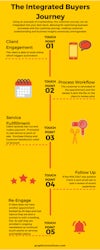
What is a Tech Stack? Organizational Tech Stack 101
The short answer is, it depends.
Tech Stack originated in the software development community but has since evolved, and a quick google search yields the following definition:
“A tech stack is defined as the set of technologies an organization uses to build a web or mobile application. It is a combination of programming languages, frameworks, libraries, patterns, servers, UI/UX solutions, software, and tools used by its developers.”
The Evolution of the Tech Stack
The above definition is true, but the evolutions of this definition are occurring at a more macro level. Consider the Mar-tech (Marketing Technology) Stack elements:
- Website
- Landing pages
- Blog
- Microsites
- Marketing Automation
- Email Marketing
- Social Media
- Pay Per Click advertising management
The list goes on. Next, consider the Sales Stack (Sales Technology) elements:
- CRM
- Document Tools
- Video Teleconference software
- Calendars
- Quoting Software
- Time Tracking
- Presentation decks
Again, the list goes on. Lastly, consider linking these two stacks with your Financial/Resource Planning systems.
All this together, including the software tech stack, is the complete organization tech stack. Integrating all the pieces of the tech stack allows for optimizing business processes and the customer journey, creating customer understanding and business insights previously unimaginable.
How a Tech Stack is Relevant to You
If you are a small or medium enterprise leader, you may be thinking a complicated tech stack doesn’t apply to me. You are wrong! Due to cloud applications and software as a service, small barbershops and bistros are deploying tech stacks. Typically a customer experience occurs as follows:
- The customer books an appointment or makes an online order.
- The payment may be processed online, picked up curb-side or even put against an account as a subscription service (in the case of the barbershop).
- This process either creates or uses existing customer profiles, and by utilizing marketing automation and workflow automation, books the appointment in a calendar or creates a work order distributing the information to who needs it.
While the customer transaction is complete, the customer journey is not. Marketing automation creates loyalty through email engagement campaigns and automated reminders, reputation and customer satisfaction surveys.
This above experience is not uncommon, in fact it is becoming a common level service. Many small modern enterprises are utilizing available tools to create their integrated tech stacks.
As an integrated tech stack enhances the customer experience, these leaders are making a universal customer expectation that all organizations modernize. The bar has been raised. Furthermore, those that start the journey before their peers can obtain a competitive edge through customer understanding gained and business operational efficiencies achieved.
Consider the following Customer Journey made possible by a modern integrated tech stack:

How a Tech Stack is Relevant to You
With any plan, you need to define the goals you are seeking to achieve, and then map (or list) your current tech stack as that will showcase your challenges and opportunities. And then make a plan with a timeline to achieve your goals. Simple right?
I know this may be an overwhelming topic, but it doesn’t need to be. As is the case with many journeys the hardest step is the first. I suggest just start. Start with designing a customer journey that will delight your customers and then become obsessive about finding the technology to enable that remarkable experience. When your future self looks back you will not regret going down this path.
